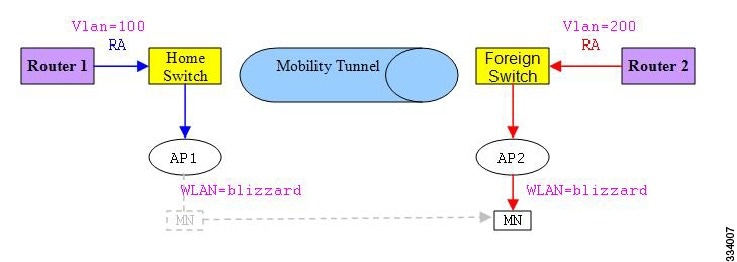In the case when the new IP address is received after RUN state, whether an addition or removal, the controller updates
the new IP addresses on its local database for display purposes. Essentially, the IPv6 uses the existing or same PEM state
machine code flow as in IPv4. When the IP addresses are requested by external entities, for example, from Prime Infrastructure,
the controller will include all the available IP addresses, IPv4 and IPv6, in the API/SPI interface to the external entities.
An IPv6 client can acquire multiple IP addresses from stack for different purposes. For example, a link-local address for
link local traffic, and a routable unique local or global address.
When the client is in the DHCP request state and the controller receives the first IP address notification from the database
for either an IPv4 or IPv6 address, the PEM moves the client into the RUN state.
When a new IP address is received after the RUN state, either for addition or removal, the controller updates the new IP addresses
on its local database for display purposes.
When the IP addresses are requested by external entities, for example, from Prime Infrastructure, the controller provides
the available IP addresses, both IPv4 and IPv6, to the external entities.



 Feedback
Feedback